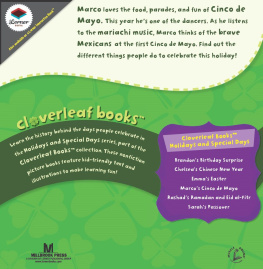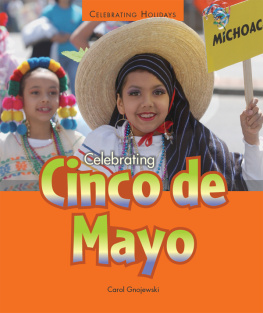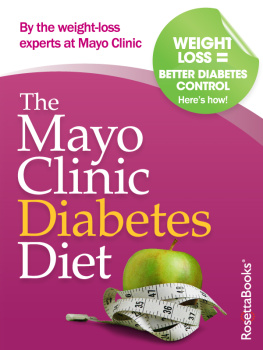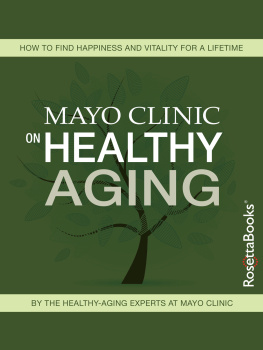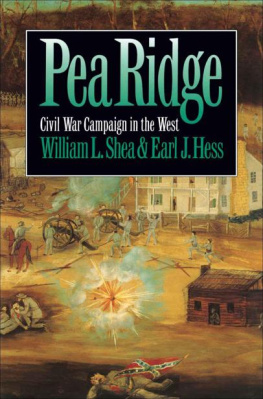El Cinco de Mayo
The publisher gratefully acknowledges the generous support of
the Valerie Barth and Peter Booth Wiley Endowment Fund
in History of the University of California Press Foundation.
El Cinco de Mayo

AN AMERICAN TRADITION
David E. Hayes-Bautista

were published originally as David E. Hayes-Bautista, Cynthia L. Chamberlin, Branden Jones, Juan Carlos Cornejo, Cecilia Caadas, Carlos Martinez, and Gloria Meza, Empowerment, Expansion, and Engagement: Las Juntas Patriticas in California, 18481869, California History 85 (2007): 423, 6672.
University of California Press, one of the most distinguished university presses in the United States, enriches lives around the world by advancing scholarship in the humanities, social sciences, and natural sciences. Its activities are supported by the UC Press Foundation and by philanthropic contributions from individuals and institutions. For more information, visit www.ucpress.edu .
University of California Press
Berkeley and Los Angeles, California
University of California Press, Ltd.
London, England
2012 by The Regents of the University of California
Library of Congress Cataloging-in-Publication Data
Hayes-Bautista, David E., 1945
El Cinco de Mayo: an American tradition / David E. Hayes-Bautista.
p. cm.
Includes bibliographical references and index.
ISBN 978-0-520-27212-5 (cloth : alk. paper) ISBN 978-0-520-27213-2 (pbk. : alk. paper)
1. Hispanic AmericansCaliforniaHistory19th century. 2. Hispanic AmericansCaliforniaEthnic identity 3. Cinco de Mayo (Mexican holiday)Social aspectsUnited States. 4. Cinco de Mayo, Battle of, Puebla, Mexico, 1862. 5. Cinco de Mayo, Battle of, Puebla, Mexico, 1862Social aspectsUnited States. 6. Cinco de Mayo, Battle of, Puebla, Mexico, 1862Press coverageUnited States. 7. United StatesHistoryCivil War, 1861-1865Social aspects. I. Title.
F870.S75H384 2012
394.262dc23 2011041840
Manufactured in the United States of America
21 20 19 18 17 16 15 14 13 12
10 9 8 7 6 5 4 3 2 1
In keeping with a commitment to support environmentally responsible and sustainable printing practices, UC Press has printed this book on Rolland Enviro100, a 100% post-consumer fiber paper that is FSC certified, deinked, processed chlorine-free, and manufactured with renewable biogas energy. It is acid-free and EcoLogo certified.
CONTENTS
ILLUSTRATIONS
FIGURES
MAPS
Introduction
ACCORDING TO ONE VERSION of Bautista family legend, on May 5, 1862, my great-great-grandfather, Bartolo Bautista, stood on the walls of Puebla and watched the mighty French army march into view. The French charged, a battle ensued, and amid the smoke and noise, my great-great-grandfathers unit was isolated, surrounded, and taken prisoner. They were told that they were going to be shot and should prepare themselves to die. The French put my great-great-grandfather and his comrades up against a wall. First, however, they ordered the prisoners to remove their shirts. The French army lived off the territories they occupied and therefore intended to use their victims clothing, so they did not want to get the shirts bloody. The Mexican prisoners removed their shirts and presented their bare chests to the firing squad.
But now the French soldiers appeared to be carrying on a confused discussion. Finally, one of them pointed to my great-great-grandfather and waved him out of the execution line; he was not going to be shot. Why not? A birthmark had just saved his life. The dark splotch over his heart was in the form of a hand, all five fingers clearly visible, so detailed that one could even see the fingernails. The French soldiers superstitiously refused to take aim at the heart below such a birthmark, so he was let go. He returned to Atlautla and later had a family, and I now exist to write this book 150 years later.
I first heard this story in the early 1970s, in Atlautla. An uncle, Adn Pez, who had a story for every occasion, managed to slip this particular incident into a long line of family and town lore he was sharing with me over merienda, the Ibero-American equivalent of teatime, served between
In the early days of the Chicano movement in the 1960smore than a century after my great-great-grandfathers (possibly apocryphal) brush with death before a French firing squad at the first battle of Pueblawe few Latino undergraduates at the University of California, Berkeley, were pushing to make the Latino presence felt on campus. We devised an annual Cinco de Mayo concert at the Greek Theatre, where salsa musicians such as Carlos Santana, Coke Escovedo, Ray Barreto, and Eddie Palmieri shared the stage with Tex-Mex conjuntos, East Los Angeles doo-wop bands, and the occasional mariachi. Later, in the 1970s, I was a student at the University of California Medical Center, San Francisco. As the Cinco de Mayo approached one year, the editor of the campus newspaper, the Synapse, asked me to write an article about why the holiday was important to Latinos. I pulled together what information I could, but nothing really explained to me why we Latinos in the United States, particularly of the Chicano generation, should celebrate a battle that had taken place a hundred years ago, fifteen hundred miles away. I talked with a few people around the Bay Area and got some descriptions from the older generation of Cinco de Mayo celebrations in the 1930s, but no one knew why this day was celebrated. I developed my own explanation, based on feelings rather than data, because there were no data then: by celebrating Cinco de Mayo, we were celebrating resistance. I felt there must be much more to it, but my research was in other areas, such as Latino patient behavior, so after that one article, I did not return to the theme for decades.
The tremendous growth in Spanish-language media during the 1980s and 1990s attracted a number of reporters and journalists from Venezuela, Columbia, Argentina, and, of course, Mexico. They too were puzzled by the celebration of the Cinco de Mayo in the United States. In the early 1980s, I was asked by a news reporter from the Spanish-language television station in San Francisco why we Chicanos celebrated Cinco de Mayo. I could not tell her why, but I did tell her that I too had noticed this. A few years earlier, I had happened to be in Guadalajara on May 5, so I had hurried downtown, expecting to find parades, music, dancers, and orators. I thought the center of action would be the cathedral plaza, so I picked out a spot on the sidewalk Reporters have asked me some version of that question many times since.
The 1960s and 1970s were a period of tremendous transformation for Latinos in California. Some of the changes were organizational, for example in the health care field. Enthusiastic young Chicanos established hundreds of community clinics, such as La Clnica de la Raza in Oakland, where I was executive director from 1970 to 1974. They also laid the foundations for a number of organizations still functioning in the field of Latino health, such as the California Latino Medical Association for physicians, the Latino Medical Student Association for medical students and residents, and the Chicanos/Latinos for Community Medicine for prehealth professional students. Similar developments took place in education, legal aid, policing, banking, and even the grocery industry.
Next page


